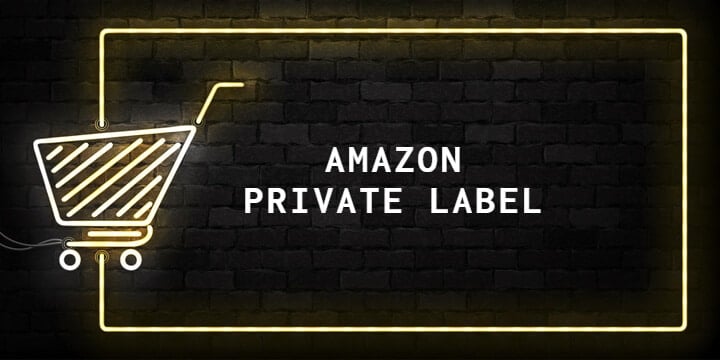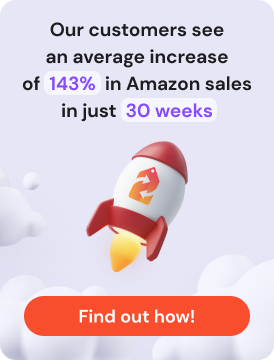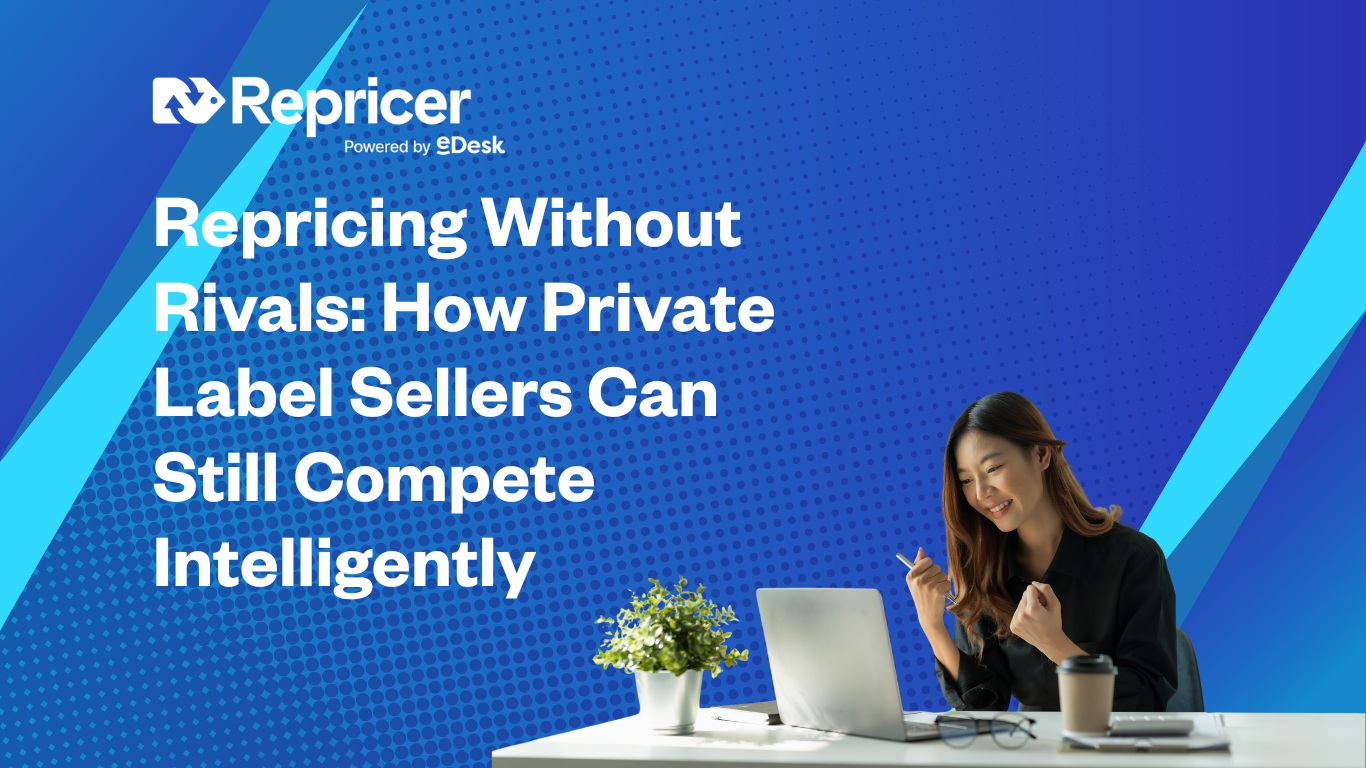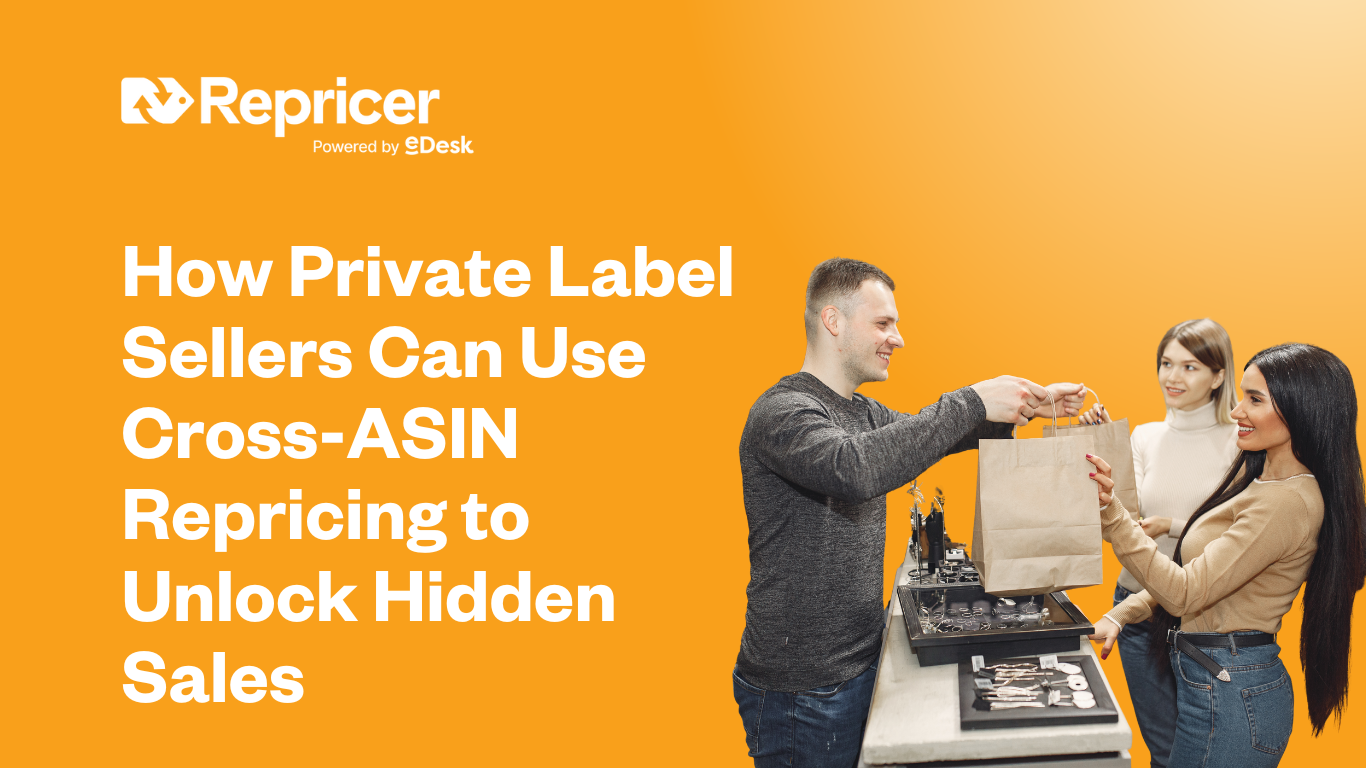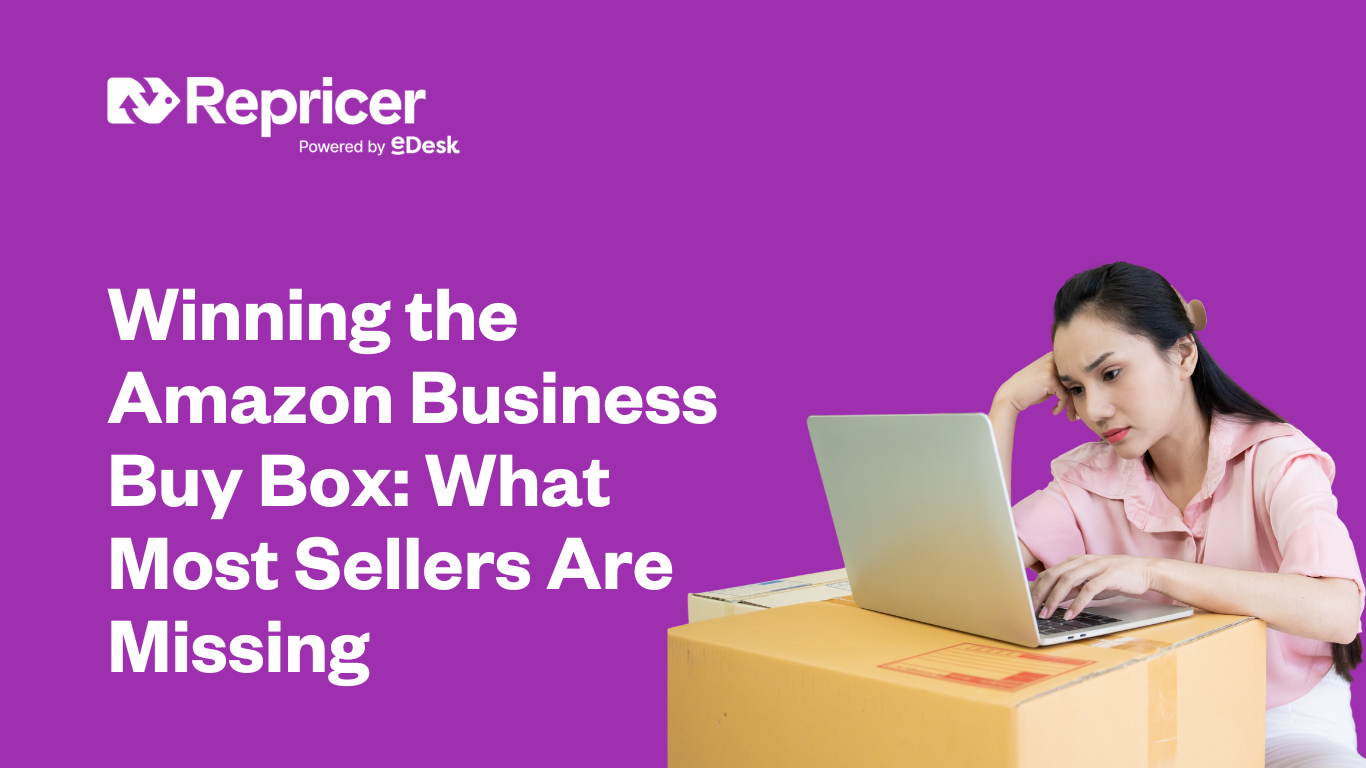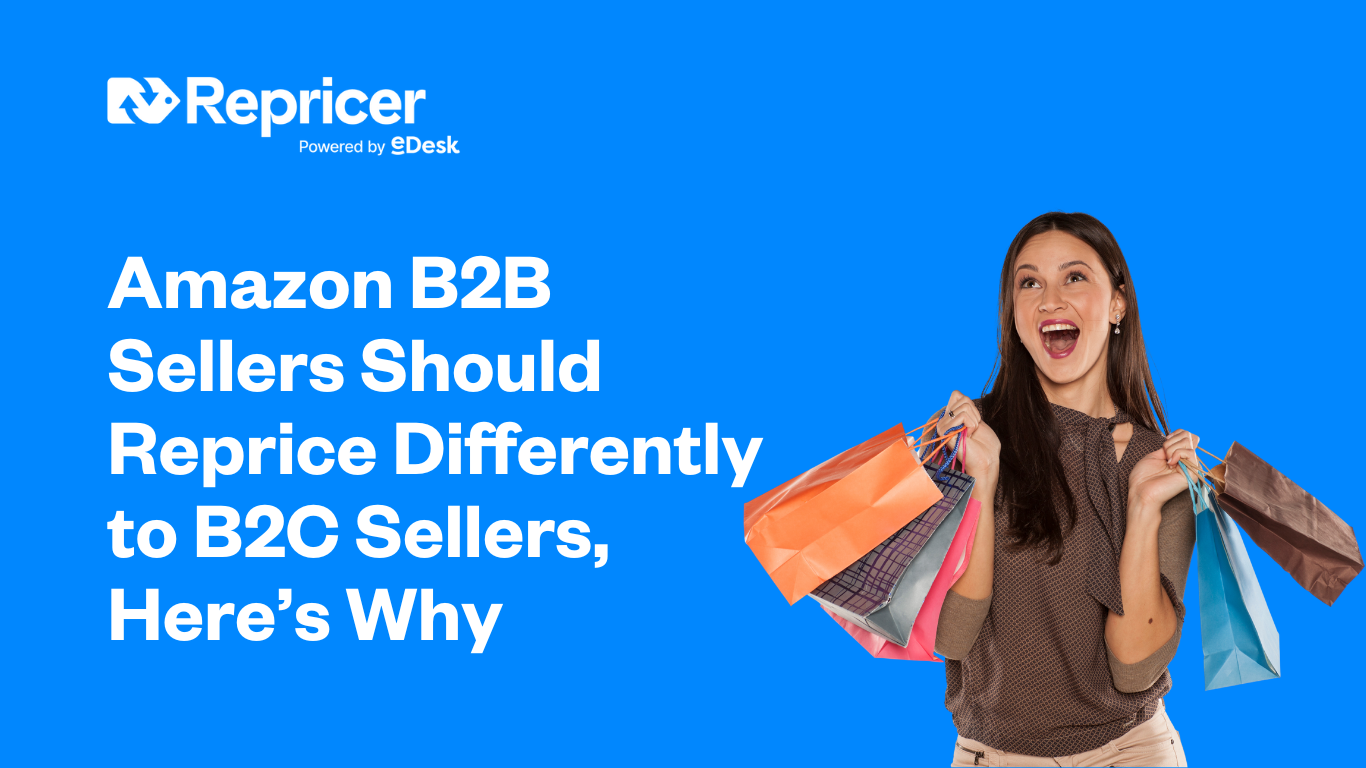Des milliers de nouveaux vendeurs tiers rejoignent Amazon chaque jour, ce qui rend de plus en plus difficile pour les vendeurs de trouver un produit sur un marché non saturé et de se démarquer de la foule. Malgré les difficultés et les décisions auxquelles les vendeurs sont confrontés au départ, une fois que vous avez trouvé un produit de niche qui répond à un besoin, vous êtes sur la bonne voie.
Vous pouvez réaliser des milliers de dollars de bénéfices par mois simplement en identifiant et en vendant un produit clé, ce qui vous permet d’augmenter votre stock pour vendre éventuellement votre propre marque sur Amazon avec une large gamme de produits et de générer un niveau de revenu significatif. La vente de marques privées sur Amazon est l’un des moyens d’y parvenir. Elle vous permet de vous inscrire à un compte vendeur et de commencer à tirer profit de l’audience énorme et diversifiée d’Amazon en utilisant votre propre nom de marque.
Toutefois, si vous n’étudiez pas suffisamment la concurrence et le marché avant de vous lancer dans la vente de marques de distributeur, vous risquez d’investir dans un produit qui fait déjà l’objet d’une trop forte concurrence ou d’une demande faible, voire inexistante, sur Amazon. Selon des statistiques récentes, plus de 54 % des vendeurs d’Amazon utilisent aujourd’hui le modèle commercial des marques de distributeur pour leurs gammes de produits, ce qui en fait la méthode de vente la plus populaire sur la plateforme.
Pour vous aider à passer à la vente de marques de distributeur sur Amazon, l’équipe de Repricer.com vous propose un guide simple à suivre.
Qu’est-ce que la vente de marques privées sur Amazon ?
La vente sous marque de distributeur Amazon consiste essentiellement à ce qu’un fournisseur ou un fabricant crée un produit qu’un vendeur peut marquer et vendre comme s’il s’agissait de son propre produit. En général, un fournisseur sera heureux d’ajouter votre marque au produit pour vous, de sorte que vous n’aurez plus qu’à vous concentrer sur la vente.
Que vous choisissiez de simplement apposer un logo sur vos produits ou que vous préfériez les personnaliser davantage en termes de couleurs ou de caractéristiques, l’ajout d’une marque à un produit vous permet d’augmenter sensiblement le prix et de générer un bénéfice beaucoup plus important.
Comment commencer à vendre des marques de distributeur sur Amazon ?
Lorsque vous vous lancez dans la vente sous marque de distributeur, il est important de connaître votre budget sur le bout des doigts. Il est préférable d’être strict avec vous-même au départ et de connaître vos limites plutôt que de rencontrer des difficultés financières plus tard.
Il est également important de comprendre que si la vente sous marque de distributeur peut être très simple une fois que vous avez trouvé votre/vos produit(s) et que les ventes commencent à arriver, le processus d’identification de vos produits, d’approvisionnement et de référencement de ces derniers demande beaucoup de temps et de dévouement.
Comment trouver les meilleurs produits de marque privée à vendre sur Amazon ?
Il n’y a pas de règle absolue lorsqu’il s’agit de trouver les meilleurs produits de marque privée à vendre sur Amazon. Même un produit très spécialisé et très demandé peut ne pas se vendre si vous ne l’abordez pas de la bonne manière. De même, si votre produit est similaire à ce qui existe déjà, mais que vos techniques de vente et vos commentaires sont excellents, vous pouvez encore en faire un énorme succès.
Bien qu’il s’agisse de la manière dont vous vendez votre produit et non de ce que vous vendez, il y a, bien sûr, quelques facteurs clés à garder à l’esprit pour ceux qui commencent à vendre des marques privées sur Amazon…
Taille et poids
En général, plus votre produit est petit et léger, mieux c’est. Si vous devenez vendeur sur Amazon en respectant des budgets stricts et que vous souhaitez investir le moins possible pour démarrer, la taille et le poids d’un produit peuvent faire le succès ou l’échec.
Si possible, essayez de trouver un produit qui tienne dans une boîte à chaussures afin de limiter vos frais d’expédition, de stockage des stocks ou d’entreposage. les frais de Fulfilment by Amazon (FBA) au minimum et que vos marges bénéficiaires soient élevées.
Demande de produits
La demande est un autre facteur clé à prendre en compte lorsque vous évaluez vos options de vente de produits sous marque de distributeur. À moins de disposer d’un budget important pour atténuer le risque, ne tombez pas dans le piège de la vente d’un produit qui est récemment devenu à la mode ou qui a commencé à être tendance, car il est probable qu’il disparaîtra aussi rapidement qu’il est apparu.
Pour votre premier produit sous marque de distributeur, essayez de vendre un produit « de première nécessité », c’est-à-dire un article dont la demande est constante tout au long de l’année et qui ne fluctue pas en fonction des tendances ou des saisons. Pensez aux vêtements de base, aux jouets, à la papeterie, à l’électronique et plus encore. Quand trouver des produits rentablesPour trouver des produits rentables, recherchez ceux qui font l’objet d’une demande régulière tout au long de l’année.
Un concept simple
Bien que vous puissiez penser qu’un produit offrant un éventail de caractéristiques uniques se vendra, ce n’est pas toujours le cas. Pour réussir en tant que vendeur sur Amazon, il faut rester simple. N’essayez pas de compliquer à l’excès le concept d’un produit, car vous risqueriez de vous aliéner certaines parties de votre marché cible.
Plus la conception d’un produit est simple, plus il sera facile et moins coûteux à fabriquer pour un fournisseur, et moins vous aurez à investir. Vous ne ferez peut-être pas autant de bénéfices par vente, mais vous aurez l’esprit tranquille en sachant que les consommateurs comprendront facilement comment utiliser votre produit et qu’il ne risquera pas d’être endommagé au cours du processus d’expédition.
Aller plus loin
Ensuite, demandez-vous ce qui différencie votre produit de ce que les concurrents vendent ou font déjà.
Consultez les avis sur les produits les plus vendus pour savoir comment améliorer le produit d’un concurrent et le vendre à un prix plus élevé. Un simple changement de couleur, de texture ou l’ajout d’une caractéristique peut vous permettre d’obtenir une marge bénéficiaire beaucoup plus élevée. Veillez simplement à ne pas enfreindre les lois sur les droits d’auteur, les marques ou les brevets.
Trouver un créneau
Plus l’objectif d’un produit est spécifique et de niche, mieux c’est. Par exemple, il ne sert à rien d’essayer de vendre un rouleau de papier hygiénique de base – c’est peut-être une nécessité, mais vous ne serez qu’un tout petit poisson dans un grand étang de concurrents de marque existants.
Essayez de trouver un produit qui s’adresse à un marché de niche en termes de démographie, de situation financière, d’attentes en matière de qualité, d’emplacement, etc. Ne cherchez pas à combler une lacune sur n’importe quel marché, mais plutôt à trouver une lacune spécifique sur un marché très ciblé. Les produits en marque blanche constituent souvent un excellent point de départ pour ceux qui cherchent à pénétrer des niches spécifiques.
Enfin, n’oubliez pas que la demande et les marchés évoluent. Si votre produit n’est pas considéré comme une nécessité, vous devez être prêt à adapter votre gamme de produits et votre inventaire à l’air du temps, si vous voulez que vos ventes de marques de distributeur Amazon génèrent un flux constant de revenus. Mise en œuvre des stratégies de tarification intelligentes pour votre marque est cruciale pour un succès à long terme.
Recherche de concurrents
Une fois que vous avez une idée précise du type de produit à vendre sous marque de distributeur, vous devez effectuer des recherches approfondies sur la concurrence. Que font vos concurrents avec leur image de marque ? À quoi ressemblent leurs listes et comment sont-elles optimisées ? Inspirez-vous de vos concurrents et allez plus loin.
Ne tombez pas dans le piège de vendre un produit qui est actuellement à la mode simplement parce que vos concurrents le font. Les marques de distributeur Amazon plus importantes et mieux établies peuvent avoir le budget nécessaire pour expérimenter et suivre les tendances, mais pour ceux qui débutent, il est préférable de vendre des produits qui seront nécessaires tout au long de l’année.
Trouver un fournisseur
Si vous effectuez des recherches suffisantes sur vos concurrents, vous devriez avoir une idée précise de vos fourchettes de prix, mais celles-ci seront également influencées par les coûts de fabrication. Lorsque vous êtes prêt à trouver un fournisseur, rendez-vous sur Alibaba, un énorme site qui vous permet de rechercher n’importe quel produit et de trouver un fabricant prêt à le fabriquer pour vous. Vous pouvez utiliser la plateforme pour contacter directement les fournisseurs, établir des relations à long terme et analyser les prix.
Il est important de travailler avec un fournisseur qui soit communicatif et qui vous permette de passer des commandes d’essai afin que vous puissiez voir le produit par vous-même avant de commander de grandes quantités. N’hésitez pas non plus à négocier avec les fournisseurs ; comme ils ont aussi des concurrents, ils peuvent être disposés à baisser leurs prix. Efficace l’approvisionnement en produits est une étape cruciale dans l’établissement de votre activité de marque privée Amazon.
Une fois que vous avez créé votre compte vendeur, vous pouvez utiliser le calculateur de frais FBA d’Amazon pour déterminer vos marges bénéficiaires en fonction de votre prix cible, des prix de vos fournisseurs, des dimensions, du poids, etc.
Programme FBA d’Amazon
Avant de vous lancer dans le référencement de votre/vos produit(s) sous marque de distributeur Amazon, vous devrez décider si vous souhaitez vous occuper vous-même de l’exécution des commandes ou si vous souhaitez bénéficier du programme FBA d’Amazon.
Le programme FBA consiste à envoyer vos produits dans un entrepôt Amazon, qui stocke et traite toutes les commandes en votre nom. Vous évitez ainsi le stress lié à l’emballage, à l’expédition, au traitement des retours et même au service clientèle.
Il est donc important d’évaluer vos options et de décider du temps et des ressources que vous pouvez consacrer à votre entreprise de vente de marques privées sur Amazon.
Des millions de vendeurs de marques privées du monde entier bénéficient du programme FBA, qui vous permet de concentrer vos efforts sur d’autres aspects de votre activité, tels que l’image de marque, la construction d’une réputation et la promotion des produits.
Inscrire votre produit
Tenez compte de la catégorie à laquelle appartient votre produit lorsque vous créez vos listes. Certaines catégories de produits prendront naturellement beaucoup plus de temps à être approuvées que d’autres. Si vous souhaitez créer des listes rapidement et facilement, il est préférable de commencer par des catégories à faible risque et peu sensibles, afin de les faire approuver et de les rendre prêtes à l’emploi en seulement trente secondes.
Même si vous avez l’impression que le plus dur est fait une fois que vous avez trouvé vos produits, il est toujours essentiel d’accorder une attention particulière à l’optimisation de vos listes de produits. Vos produits n’apparaîtront pas aux consommateurs et ne sortiront pas du lot s’ils ne sont pas optimisés de la bonne manière.
Effectuez de nombreuses recherches sur les mots-clés et les concurrents afin de déterminer les principaux mots-clés à inclure dans les titres de vos produits.
Il y a quelques éléments clés à prendre en compte dans une liste Amazon :
- Titre du produit
- Les caractéristiques de votre produit en quelques points
- Photographies de haute qualité
- Description détaillée du produit
- Mots clés
L’image de marque
La clé de la vente de produits sous marque de distributeur sur Amazon est de s’adapter et d’être proactif dans sa stratégie. Il y a de fortes chances que vous démarriez avec une marque entièrement nouvelle, et c’est donc à vous qu’il revient de faire connaître la marque et d’instaurer un climat de confiance avec votre marché cible.
Tirez profit de vos audiences existantes, que vous ayez un site web, une liste d’adresses électroniques ou des plateformes sociales avec des adeptes. Si vous n’avez pas encore de public, vous pouvez travailler sur les points suivants en développant votre marque Amazon pendant la période précédant le lancement de votre produit grâce à la publicité sociale, aux campagnes d’e-mailing, aux remises de lancement et à bien d’autres choses encore.
La publicité payante devient rapidement l’un des moyens les plus rentables pour les marques d’atteindre les bonnes personnes en ligne. Les produits sponsorisés par Amazon sont un excellent moyen de faire connaître vos produits de marque privée. Si vous disposez d’un budget suffisant, il est intéressant d’investir dans une campagne publicitaire automatique ou manuelle afin de présenter vos produits aux bonnes personnes, d’obtenir une première exposition et d’augmenter les conversions. Une fois que vous aurez constaté des conversions, votre classement organique s’améliorera également.
Gain Reviews
En tant que consommateurs, nous sommes tous coupables d’aller directement consulter les avis sur un produit sur Amazon avant de l’acheter. Une fois que vous avez commencé à vendre un produit sous marque de distributeur, l’une de vos principales priorités doit être d’obtenir des avis positifs et instructifs sur vos listes.
N’ayez pas peur de tendre la main aux clients et de leur demander poliment un avis ou de mettre en place des e-mails automatisés qui s’en chargeront pour vous. Quelques commentaires élogieux peuvent suffire à faire décoller votre produit.
Réflexions finales
Il n’existe pas d’approche unique pour la vente de produits sous marque de distributeur sur Amazon. Pour bien faire, vous devez être prêt à faire de nombreuses recherches, prendre le temps de trouver les meilleurs produits de marque privée à vendre sur Amazon et ne pas prendre de décisions hâtives.
Repricer.com est l’outil de repricing automatique d’Amazon le plus rapide du marché. Vous pouvez utiliser le logiciel pour ajuster automatiquement vos prix et être compétitif dans les résultats de recherche. Essayer Gratuitement notre outil pendant 14 jours pour voir comment il fonctionne et vous assurer que vos produits de marque privée sont vendus au bon prix.
